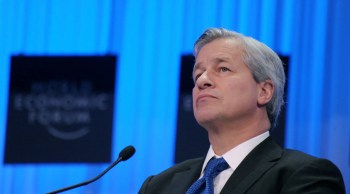Portland going 100% renewable
Share Now on:
Portland going 100% renewable
SCOTT JAGOW: Portland, Ore., has a reputation for being a very environmentally conscious city. Great public transportation, recycling programs, things like that. With all the talk about global warming, Portland has decided to take things a step further. Mitchell Hartman reports.
SOUND: And our headliner tonight, Anna Cohen, is a high-fashion line of apparel created using organic and natural fiber innovations including bamboo, cotton, hemp, wool and soy. Let the models hear it from you, hit the music, this is set number one . . .
MITCHELL HARTMAN: A recent fashion show at Portland City Hall showcased clothing for the green-leaning Gucci set. But the electricity for the lights and PA system? Not exactly green. It comes mostly from coal and huge, hydroelectric dams. Only a tiny fraction of the power in the Northwest is generated from renewable sources like the wind and sun.
But starting next year, the juice that runs City Hall will be 100 percent renewable. In a complex deal between power broker Sempra Energy Solutions, local landowners, and a regional wind developer, all city operations will run from wind power.
JEFF COGEN:“We’re the first effort by a customer to get renewable energy on this scale.”
Jeff Cogen is a senior aide on energy matters for the Portland City Council.
COGEN:“Municipalities, companies, nonprofits can do this, anyone who’s a large enough consumer of electricity that they can get into, frankly, direct negotiations with wind developers.”
Why the switch to renewable power? In a word — or rather, a few letters — the reason is CO2. Fossil fuels that power utilities are one of the biggest sources of carbon dioxide that’s warming the atmosphere. Use non-fossil fuels, and the CO2 goes away.
If Portland goes to all renewable green power, it will be the equivalent of taking nearly 12,000 cars off the road every year. Portland’s global-warming plan doesn’t specify which renewable resource the city has to use. And there are plenty of options.
There’s hydroelectric. But nobody’s building new dams these days, since the existing ones have wreaked havoc on Columbia River salmon runs.
WEATHERWOMAN:“The east side of the Cascades looks sunny. All that storm activity, gone for now. Temperatures will be in the . . . “
There’s solar, but so far solar panels can’t produce electricity anywhere near as cheaply as fossil fuels. You can burn wood and agricultural waste, or tap underground geothermal sources. Even capture the energy of ocean waves. But most of these are economic pipe dreams right now, at least for large-scale energy production. Troy Gagliano is a policy analyst with the Renewable Northwest Project.
TROY GAGLIANO:“Most of the cost of a wind plant is in the turbines and building it. So once you’ve got all the equipment in the ground, you don’t have to buy the wind that blows across the land.”
Gagliano points out that the price of fuels like natural gas, coal, oil, and uranium has soared in recent years, and utility rates reflect that. With wind, you can lock in a contract and get stable pricing for a decade or more.
And that’s already made some area farmers a bit wealthier. A few hours east of Portland, a steady wind ripples across golden wheat. Farmer Earl Pryor says his 15,000-acre spread of dry rangeland supports three crops:
EARL PRYOR:“Wheat, cattle and wind. We’re essentially farming the wind. It’s an alternate crop for us.”
As the green power flows out, another kind of green flows in. The average windmill pays $3,000 to $4,000 a year. Plant wheat on the land, and it pays about $250. Pryor and other landowners have installed hundreds of windmills in the past decade to feed the regional power grid. That’s sent local property taxes up, helping to support schools and road repair.
Back in Portland, City Commissioner Dan Saltzman is overseeing negotiations to develop the new wind farm that will supply all of the city’s energy needs. And he’s glad to see that it’s the region that will benefit.DAN SALTZMAN:“We’re also contributing . . . you know, building jobs, economic development opportunities in a rural economy. This state, like a lot of states throughout the country, has a tremendous urban-rural divide.”In money terms, that means about $14 million a year in city power purchases flowing to landowners and counties in rural areas. So, instead of paying for coal from Montana, or natural gas from Canada and the Far East, Portland taxpayers will be buying a thoroughly domestic resource: Eastern Oregon wind.
In Portland, I’m Mitchell Hartman for Marketplace.
There’s a lot happening in the world. Through it all, Marketplace is here for you.
You rely on Marketplace to break down the world’s events and tell you how it affects you in a fact-based, approachable way. We rely on your financial support to keep making that possible.
Your donation today powers the independent journalism that you rely on. For just $5/month, you can help sustain Marketplace so we can keep reporting on the things that matter to you.


















